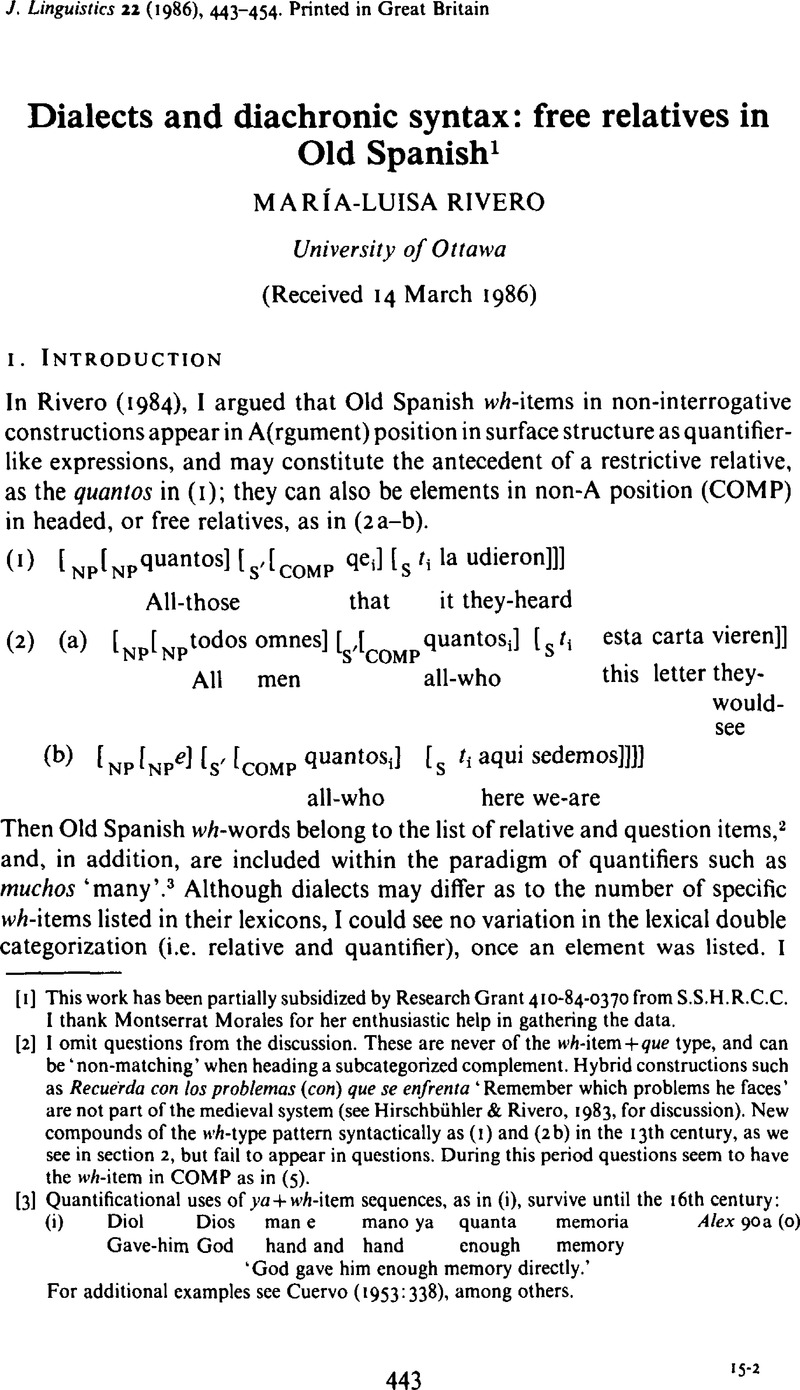Crossref Citations
This article has been cited by the following publications. This list is generated based on data provided by Crossref.
Fava, Elisabetta
1996.
Questioning interrogative interpretation in some Indo-European languages.
Language Sciences,
Vol. 18,
Issue. 1-2,
p.
87.
van Riemsdijk, Henk
2006.
The Blackwell Companion to Syntax.
p.
338.
2006.
The Blackwell Companion to Syntax.
p.
439.
Ojea, Ana
2013.
A uniform account of headless relatives in Spanish.
Language Sciences,
Vol. 40,
Issue. ,
p.
200.
van Riemsdijk, Henk C.
2017.
The Wiley Blackwell Companion to Syntax, Second Edition.
p.
1.
Sadler, Louisa
and
Camilleri, Maris
2018.
Free relatives in Maltese.
Brill’s Journal of Afroasiatic Languages and Linguistics,
Vol. 10,
Issue. 1,
p.
115.
Pinto, Clara
2023.
On the Emergence of Portuguese FCI qualquer: A Diachronic Perspective.
Languages,
Vol. 8,
Issue. 4,
p.
290.
Agulló, Jorge
2024.
El pronombre reasuntivo en español como mecanismo de concordancia.
Círculo de Lingüística Aplicada a la Comunicación,
Vol. 97,
Issue. ,
p.
121.



